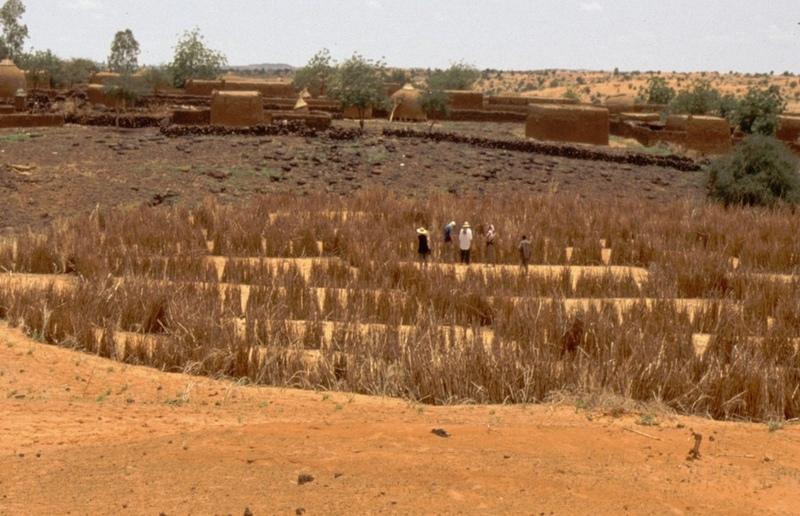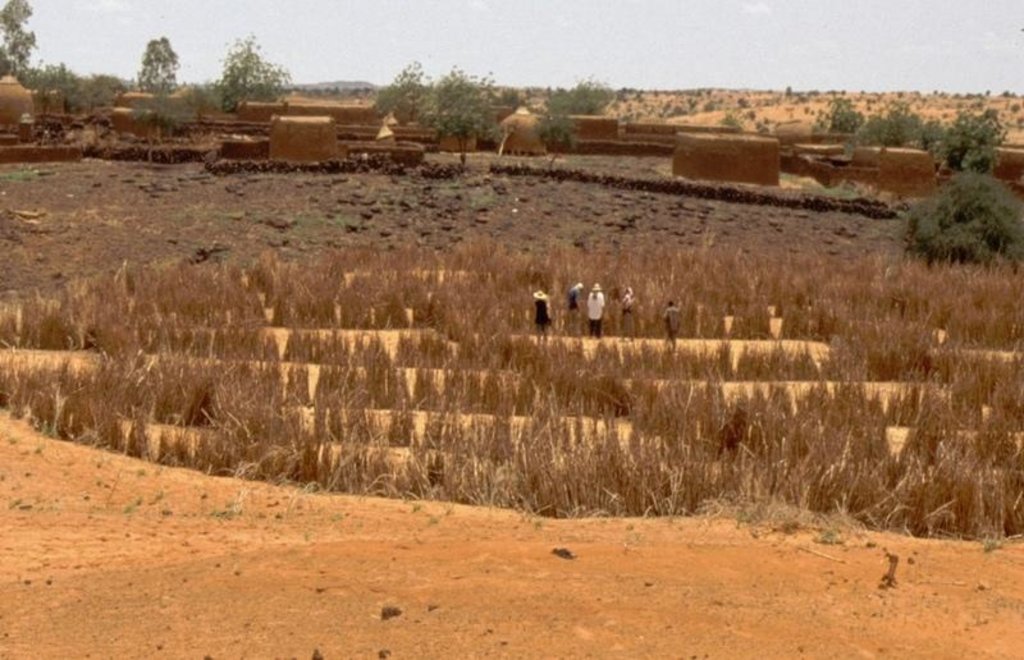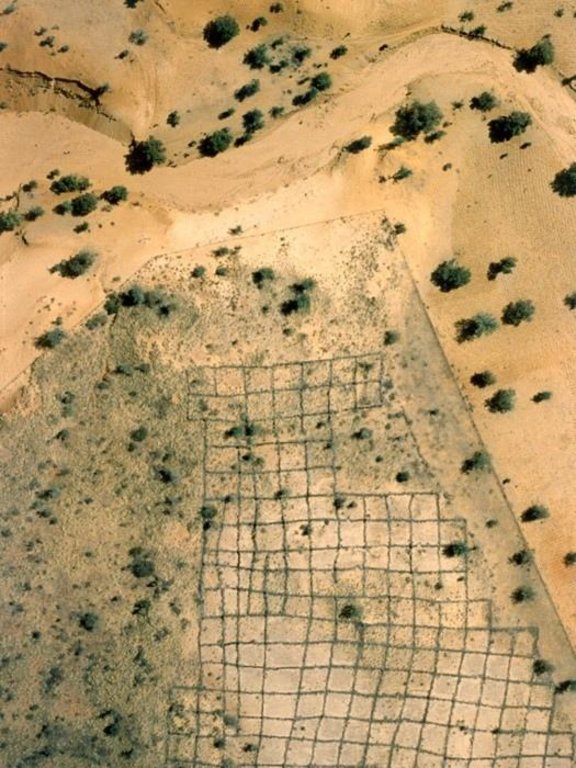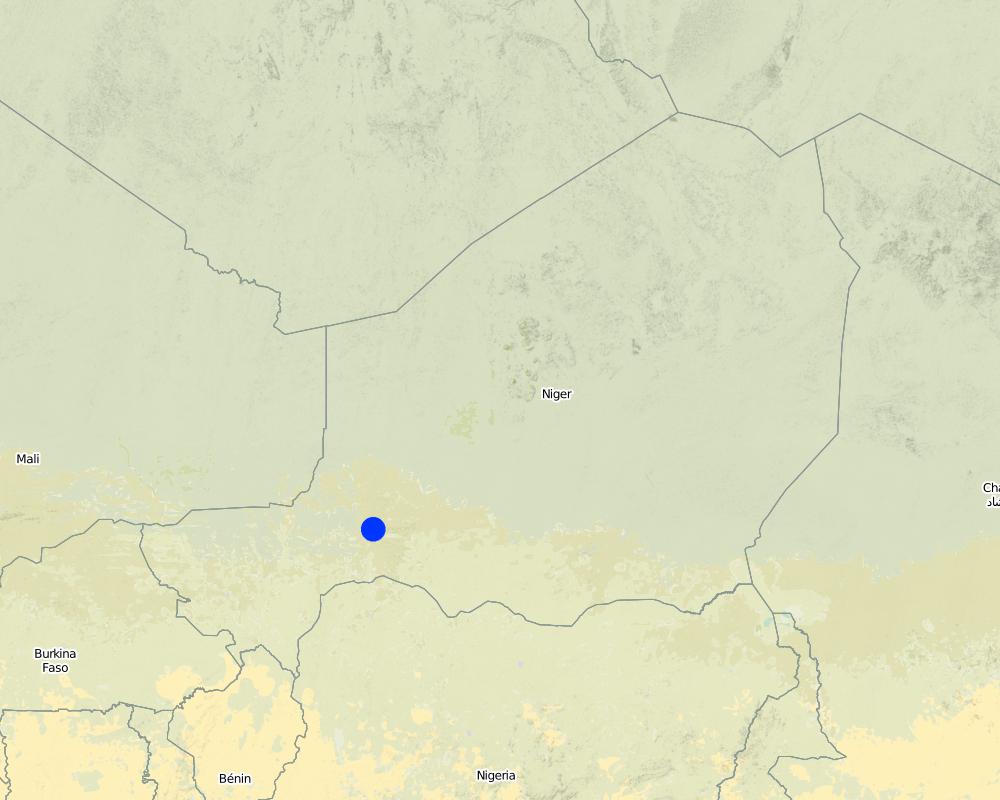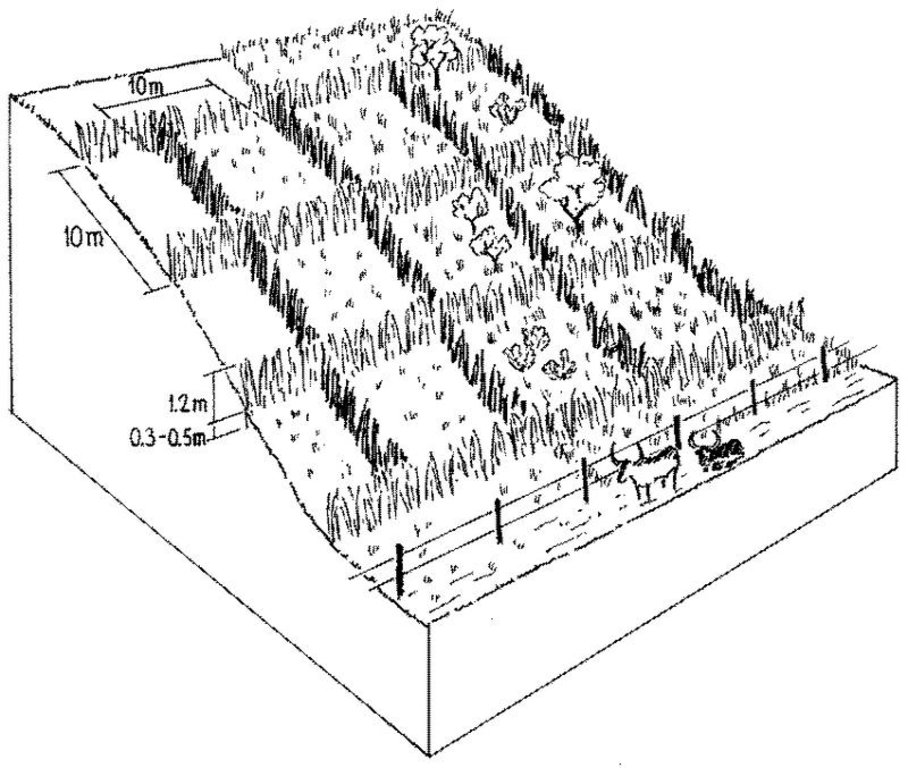Sand dune stabilisation [Нигер]
- Создание:
- Обновить:
- Составитель: Charles Bielders
- Редактор: –
- Рецензенты: David Streiff, Deborah Niggli, Alexandra Gavilano
Fixation des dunes
technologies_1101 - Нигер
Просмотреть разделы
Развернуть все Свернуть все1. Общая информация
1.2 Контактные данные специалистов и организаций, участвующих в описании и оценке Технологии
Специалист по УЗП:
Специалист по УЗП:
Специалист по УЗП:
Название проекта, содействовавшего документированию/оценке Технологии (если применимо)
Projet de développement rural de Tahoua, Niger (PDRT)Название проекта, содействовавшего документированию/оценке Технологии (если применимо)
Book project: where the land is greener - Case Studies and Analysis of Soil and Water Conservation Initiatives Worldwide (where the land is greener)Название организации (-ий), содействовавших документированию/оценке Технологии (если применимо)
Université catholique de Louvain (Université catholique de Louvain) - БельгияНазвание организации (-ий), содействовавших документированию/оценке Технологии (если применимо)
Centre for Agriculture in the Tropics and Subtropics (Centre for Agriculture in the Tropics and Subtropics) - ГерманияНазвание организации (-ий), содействовавших документированию/оценке Технологии (если применимо)
ICRISAT (ICRISAT) - НигерНазвание организации (-ий), содействовавших документированию/оценке Технологии (если применимо)
CDE Centre for Development and Environment (CDE Centre for Development and Environment) - ШвейцарияНазвание организации (-ий), содействовавших документированию/оценке Технологии (если применимо)
Université catholique de Louvain (Université catholique de Louvain) - Бельгия1.3 Условия, регламентирующие использование данных, собранных ВОКАТ
Составитель и ответственный(-ые) специалист(-ы) согласны с условиями, регламентирующими использование собранных ВОКАТ данных:
Да
1.5 Ссылка на Анкету (ы) по Подходам УЗП (документируется с использованием ВОКАТ)
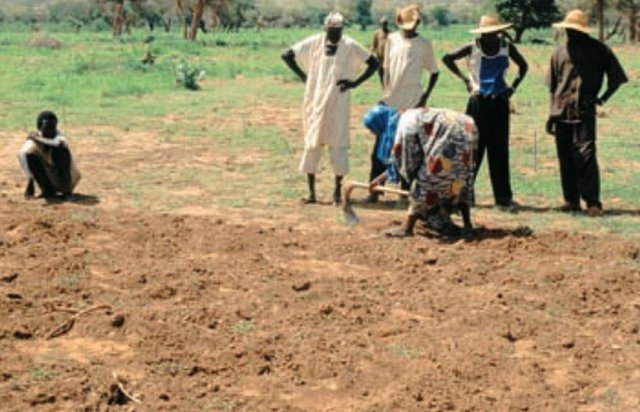
Approche participative de réhabilitation des terres individuelles et … [Нигер]
Planification et gestion des terres individuelles et villageoises sur la base d’une participation des usagers ; promotion simultanée des activités des femmes.
- Составитель: Eric Tielkes
2. Описание Технологии УЗП
2.1 Краткое описание Технологии
Определение Технологии:
A combination of three measures to stabilise dunes: area closure, the use of palisades, and vegetative fixation through natural regeneration as
well as planting.
2.2 Подробное описание Технологии
Описание:
In the Sahelian zone of Niger, sand dune encroachment can lead to loss of agricultural and pastoral land, and threatens villages. These dunes may form as a result of an increase in wind erosion, but more frequently originate from formerly stabilised dunes that have become mobile again following the disappearance of vegetation. Vegetation loss may occur through a combination of unfavourable climatic conditions and overexploitation by grazing and fuelwood gathering.
Purpose of the Technology: Sustainable dune fixation requires the regeneration of vegetation on the mobile parts of the dunes. For plants to establish, the dunes need to be protected by mechanical measures while being defended against any kind of use. Hence, the technique of dune stabilisation consists of a combination of three measures. These are as follows: (1) Area closure by wire fencing and guarding to prevent exploitation of the area during the rehabilitation phase until vegetation is sufficiently established (2-3 years). (2) Construction of millet stalk palisades arranged ideally in ‘checker-board’ squares, which act as windbreaks. These physical structures are a barrier to sand transport by wind, and thus are a prerequisite for revegetation. After two years the palisades fall apart and decompose - and the vegetation takes over the dune fixation function. Small erosion gullies can be controlled by check dams made from stone or millet stalks. (3) Natural regeneration, planting and seeding of annual and perennial plants (including Acacia spp. and Prosopis spp.) for soil stabilisation.
Establishment / maintenance activities and inputs: As soon as vegetation cover is established on the denuded surfaces the dunes can be used for grazing or for harvesting of herbs and fuelwood. Period and frequency of use should be determined in common agreement with all actors involved. In addition the pasture on the dune can be used as a ’reserve’ for late dry-season grazing, depending on vegetation development and herd size. Between 1991 and 1995, just over 250 ha of sand dunes were stabilised in the case study area. Incentives were provided by the ‘Projet de Développement Rural de Tahoua’ (PDRT, see also ‘Participatory land rehabilitation’ approach). After 1995 no further dunes were stabilised due to the high cost of the wire fencing, which local communities simply could not afford themselves. However, as the objective of the fence is to keep out humans and animals during critical periods (the rainy season), the same effect could be obtained at no financial cost through ‘social fencing’, that is agreement between stakeholders on where there should be no grazing. Furthermore the technology itself - which works well - could be relevant to situations where higher investment can be justified for specific reasons.
2.3 Фотографии, иллюстрирующие Технологию
2.5 Страна/ регион/ места, где применяется Технология, информация о которых собрана в данной Анкете
Страна:
Нигер
Административная единица (Район/Область):
District of Tahoua
Охарактеризуйте пространственное распространение Технологии :
- равномерно-однородное применение на определенной площади
Если технология равномерно занимает территорию, укажите площадь покрытия (в км2):
2,0
Пояснения:
Total area covered by the SLM Technology is 2 km2.
Map
×2.7 Внедрение Технологии
Укажите, как именно Технология УЗП была внедрена:
- через проекты/ внешнее вмешательство
3. Классификация Технологии УЗП
3.1 Основные цели и задачи реализации Технологии
- снижение или предотвращение деградации земель, восстановление нарушенных земель
- reduce loss of land
3.2 Текущий(-ие) тип(-ы) землепользования на территории, где применяется Технология

Пастбищные угодья
Экстенсивный выпас:
- Полукочевое скотоводство
- Загонно-порционное
Пояснения:
Major land use problems (compiler’s opinion): The area suffers from an imbalance between availability of natural resources (constrained by soil fertility and rainfall) and the rapid growth of the human and livestock populations. As a result, there is chronic food insufficiency and an associated overexploitation of the natural resource base. Accelerated wind and water erosion further enhance the degradation of the soil resources. From the farmers’ perspective, the main problems are lack of grazing land, wood and drinking water (due to sinking water tables), insufficient and unevenly distributed rainfall. Sand dunes are fragile: when overexploited, they soon remain with only unpalatable plant species, eg Panicum turgidum. When the vegetation cover on dunes decreases even further, dunes start moving again, threatening fields, villages or depressions used for fruit and vegetable cropping.
Longest growing period in days: 90; Longest growing period from month to month: Jul - Sep
3.4 Водоснабжение
Обеспеченность водой участков, где реализуется Технология :
- богарные земли
3.5 Категория УЗП, к которой относится Технология
- прекращение хозяйственного использования (прекращение доступа к территории, поддержка восстановления)
- Улучшение почвенного/ растительного покрова
3.6 Мероприятия УЗП, выполняемые в рамках Технологии

Мероприятия с использованием растительности
- Р1: Древесный и кустарниковый покров

инженерные мероприятия
- И6: Стенки, барьеры, заборы, изгороди

управленческие мероприятия
- У1: Смена типа землепользования
3.7 Основные проблемы деградации земель, на решение которых направлена Технология

ветровая эрозия почв
- Эп: утрата плодородного слоя почвы
- Эд: косвенное влияние ветровой эрозии

ухудшение химических свойств почв
- Хп: Снижение плодородия и уменьшение содержания органического вещества (вызванное не эрозией, а другими причинами)

биологическая деградация
- Бв: потеря природного разнообразия
Пояснения:
Main causes of degradation: droughts (manque de pluie; pluie mal répartie), land tenure, faim
Secondary causes of degradation: soil management (pas de jachère; pas suffisamment d'intrants. Mulching, engrais, mat. organique), deforestation / removal of natural vegetation (incl. forest fires) (combustibles), over-exploitation of vegetation for domestic use, overgrazing, population pressure (croissance de la population), poverty / wealth (Manque de moyens financiers), labour availability, education, access to knowledge and support services
3.8 Предотвращение и снижение деградации земель, или восстановление нарушенных земель
Укажите цель Технологии по отношению к деградации земель :
- предотвращение деградации земель
- восстановление/ реабилитация нарушенных земель
4. Технические характеристики, мероприятия по практической реализации, вложения и стоимость
4.1 Технический рисунок, иллюстрирующий Технологию
Спецификация (пояснения к техническому рисунку):
Sand dunes in the process of stabilisation: millet stalk palisades hinder detachment and displacement of sand particles through wind, and help vegetative cover to re-establish. Fences exclude animals during the restoration process.
Technical knowledge required for field staff / advisors: moderate
Technical knowledge required for land users: low
Main technical functions: improvement of ground cover, sediment retention / trapping, sediment harvesting, reduction in wind speed, stabilise sand dune surface, control detachment of particles by wind
Secondary technical functions: increase in organic matter
Agronomic measure: regenerated and seeded vegetation cover
Structural measure: millet stalk palisades
Structural measure: check dams (optional)
Change of land use practices / intensity level: area closure, controlled grazing
Автор:
Mats Gurtner
4.2 Общая информация по необходимым вложениям и стоимости
Укажите денежные единицы, использованные для подсчета затрат:
- Доллары США
4.3 Мероприятия, необходимые для начала реализации
| Деятельность | Время (сессия) | |
|---|---|---|
| 1. | Construction of wire fence around the dune | December to June |
| 2. | Palisade construction, 2000 m/ha. | December to June |
| 3. | Guarding the fenced area | all year round |
4.4 Вложения и затраты, необходимые для начала реализации
| Опишите затраты | Единица | Количество | Затраты на единицу | Общая стоимость на единицу | % затрат, оплаченных землепользователями | |
|---|---|---|---|---|---|---|
| Оплата труда | Enclose area and protect | ha | 1,0 | 300,0 | 300,0 | 100,0 |
| Оборудование | Tools | ha | 1,0 | 10,0 | 10,0 | |
| Посадочный материал | Tree seedlings | ha | 1,0 | 20,0 | 20,0 | |
| Строительные материалы | Wire fence | ha | 1,0 | 1120,0 | 1120,0 | |
| Общая стоимость запуска Технологии | 1450,0 | |||||
| Общие затраты на создание Технологии в долларах США | 1450,0 | |||||
Пояснения:
Duration of establishment phase: 36 month(s)
In the Sahelian zone of Niger, wind erosion constitutes one of the major causes of land degradation. Measures to combat wind erosion and sand encroachment were developed through a rural development project. However in this case the cost was too high to justify continuation: nevertheless the technology itself may be applicable in other situations
4.5 Поддержание/ текущее обслуживание
| Деятельность | Сроки/ повторяемость проведения | |
|---|---|---|
| 1. | Harvesting of millet stalks , 2,000 bundles/ha (1 bundle = 6-10 kg). | October to February / initial establishment |
| 2. | Seeding of herbaceous plants | May, just before rainy season / initial establishment |
| 3. | Transplanting of locally available trees reared in a tree nursery | June to July, early rainy season / initial establishment |
| 4. | Replanting of dead tree/shrub seedlings (20% replanting). | June to July / |
| 5. | Guarding the area closure | all year round / |
| 6. | Controlled grazing once the dune has been stabilised: for periods of between 1 day and a week every 2 to 3 weeks – as determined | / between 1 day and a week every 2 to 3 weeks |
4.6 Стоимость поддержания/ текущего обслуживания ( в год)
| Опишите затраты | Единица | Количество | Затраты на единицу | Общая стоимость на единицу | % затрат, оплаченных землепользователями | |
|---|---|---|---|---|---|---|
| Оплата труда | Maintain area and guarding | ha | 1,0 | 45,0 | 45,0 | 100,0 |
| Посадочный материал | Tree seedlings | ha | 1,0 | 5,0 | 5,0 | |
| Общая стоимость поддержания Технологии | 50,0 | |||||
| Общие затраты на поддержание Технологии в долларах США | 50,0 | |||||
Пояснения:
Labour (per ha, for establishment) includes installing wire fence (16 person days), collecting and transporting millet stalks and installing palisades (175 person days), sowing of herbaceous plants (2 person days), planting tree/shrub species (6 person days). Seedlings: under PDRT the tree nursery was financed by the project and the plants delivered to the ‘village’ - planting was done by the local population.
5. Природные и социально-экономические условия
5.1 Климат
Среднегодовое количество осадков
- < 250 мм
- 251-500 мм
- 501-750 мм
- 751-1000 мм
- 1001-1500 мм
- 1501-2000 мм
- 2001-3000 мм
- 3001-4000 мм
- > 4000 мм
Укажите среднегодовое количество осадков (если известно), мм:
300,00
Агроклиматическая зона
- полузасушливая
5.2 Рельеф
Склоны (преобладающие):
- пологие (0-2%)
- покатые (3-5%)
- покато-крутые (6-10%)
- крутые (11-15%)
- очень крутые (16-30%)
- чрезвычайно крутые (31-60%)
- обрывистые (>60%)
Формы рельефа:
- плато/ равнины
- гребни хребтов/холмов
- склоны гор
- склоны холмов
- подножья
- днища долин
Зона высотной поясности:
- 0-100 м над уровнем моря
- 101-500 м н.у.м.
- 501-1000 м н.у.м.
- 1001-1500 м н.у.м.
- 1501-2000 м н.у.м.
- 2001-2500 м н.у.м.
- 2501-3000 м н.у.м.
- 3001-4000 м н.у.м.
- > 4 тыс. м н.у.м.
5.3 Почвы
Средняя мощность почв:
- поверхностные (0-20 см)
- неглубокие (21-50 см)
- умеренно глубокие (51-80 см)
- глубокие (81-120 см)
- очень глубокие (> 120 см)
Гранулометрический состав (верхнего горизонта):
- грубый крупнозернистый/ лёгкий (песчаный)
Содержание органического вещества в верхнем горизонте:
- низкое (< 1%)
Если возможно, приложите полное описание почв или укажите доступную информацию, например тип почв, рH/ кислотность почв, ёмкость катионного обмена, содержание азота, содержание солей и т.д.
Soil fertility is low
Soil drainage / infiltration is good
5.6 Характеристика землепользователей, применяющих Технологию
Рыночная ориентация производства:
- смешанный (натуральный / коммерческий)
Доходы из других источников:
- > 50% всех доходов
Укажите другие важные характеристики землепользователей:
Off-farm income specification: due to out-migration of labour, commerce and also arts and crafts
5.7 Средняя площадь земель, используемых землепользователями с применением Технологии
- < 0,5 га
- 0,5-1 га
- 1-2 га
- 2-5 га
- 5-15 га
- 15-50 га
- 50-100 га
- 100-500 га
- 500-1000 га
- 1000-10000 га
- > 10000 га
Пояснения:
Average area of land owned or leased by land users applying the Technology: Also 15-50 ha
5.8 Собственность на землю, права на земле- и водопользование
Землевладелец:
- общинная/ поселковая
Право землепользования:
- неограниченное (неконтролируемое)
6. Воздействия и заключительные положения
6.1 Влияние Технологии УЗП в пределах территории ее применения
Социально-экономическое воздействие
Продуктивность
производство древесины
площадь, используемая для производства продукции
Комментарий/ пояснения:
temporary loss of land, reduced access to pastures
управление землями
Доходы и затраты
сельскохозяйственные издержки
Комментарий/ пояснения:
Millet stalks are taken from the fields where they have a function as mulch and fodder
объем работ
Другое социально-экономическое воздействие
initial costs
Социальное и культурное воздействие
местное самоуправление
знания в области УЗП/ деградации земель
смягчение конфликтов
Комментарий/ пояснения:
Socio-cultural conflicts between agriculturalists and pastoralists
requires concerted action
Комментарий/ пояснения:
Requires concerted action from all land users during, but even more after, rehabilitation
Экологическое воздействие
Почвы
влажность почв
почвенный покров
утрата почв
Климат и снижение риска стихийных бедствий
скорость ветра
Другие экологические последствия
soil fertility
biodiversity
soil erosion locally
6.2 Влияние Технологии за пределами территории ее применения
отложения, переносимые ветром
land or village protected from sand encroachment
Укажите оценку внешних воздействий (измерений) :
Off-site benefits are difficult to assess and do not necessarily accrue to the local land users
6.4 Анализ эффективности затрат
Насколько получаемый результат сопоставим с первоначальными вложениями (с точки зрения землепользователей)?
Эффективность затрат в краткосрочной перспективе:
крайне отрицательно
Эффективность затрат в долгосрочной перспективе:
отрицательно
Насколько получаемый результат сопоставим с текущими расходами по поддержанию технологии (с точки зрения землепользователей)?
Эффективность затрат в краткосрочной перспективе:
отрицательно
Эффективность затрат в долгосрочной перспективе:
отрицательно
6.5 Внедрение Технологии
Среди применяющих Технологию землепользователей, какова доля лиц, применяющих её по собственной инициативе, т.е. без какого-либо материального стимулирования со стороны?
- 0-10%
Пояснения:
There is no trend towards spontaneous adoption of the Technology
Comments on adoption trend: There is no spontaneous adoption as the technology is too expensive, labour intensive, and implemented on communal land.
6.7 Сильные стороны/ преимущества/ возможности Технологии
| Сильные стороны/ преимущества/ возможности по мнению составителя или других ключевых специалистов |
|---|
|
Technically it is feasible to prevent dune encroachment and hence reduce the danger it exerts on arable/pastoral land and villages How can they be sustained / enhanced? Prevent overexploitation, apply SWC measures that are technically and financially feasible (eg use cheaper fencing material or ‘social fencing’). |
|
Decrease loss of arable/pastoral land How can they be sustained / enhanced? Prevent overexploitation. |
|
Additional income to the land user How can they be sustained / enhanced? Planting multipurpose tree/shrub species on the protected dunes, encourage pasture management systems eg rotational grazing. |
6.8 Слабые стороны/ недостатки/ риски Технологии и пути их преодоления
| Слабые стороны/ недостатки/ риски по мнению составителя или ответственных специалистов | Возможные пути их преодоления/снижения? |
|---|---|
| Soil cover is very sensitive to overexploitation |
In order to increase acceptance, involve the whole community in the planning and management processes of the stabilised dune. |
| Social conflicts between farmers and herders due to area closure | In order to increase acceptance, involve all actors, including pastoralists or their representatives, in the planning and management process of the stabilised dune. |
|
Use materials for the palisades that do not have an alternative use as fodder (as millet stalks do) for example twigs of Leptadenia pyrotechnica). Plastic nets exist for making palisades, but these are very expensive. Labour requirements difficult to circumvent. |
Initiate the establishment of sustainable management systems eg communally managed rotational grazing systems. |
|
Area closure to prevent exploitation of stabilised dunes means restricted access to potential grazing areas |
Involved actors can agree upon a local convention that prohibits access during rehabilitation – ‘social fencing’ – and restricted exploitation after this phase. PDRT started to plant Euphorbia balsamifera within the fence with the idea of eventually removing and using it on another site. |
| High costs for fencing |
7. Справочные материалы и ссылки
7.1 Методы сбора/ источники информации
Ссылки и модули
Развернуть все Свернуть всеСсылки

Approche participative de réhabilitation des terres individuelles et … [Нигер]
Planification et gestion des terres individuelles et villageoises sur la base d’une participation des usagers ; promotion simultanée des activités des femmes.
- Составитель: Eric Tielkes
Модули
Нет модулей


